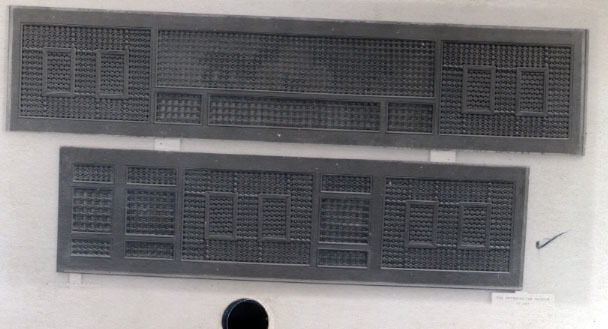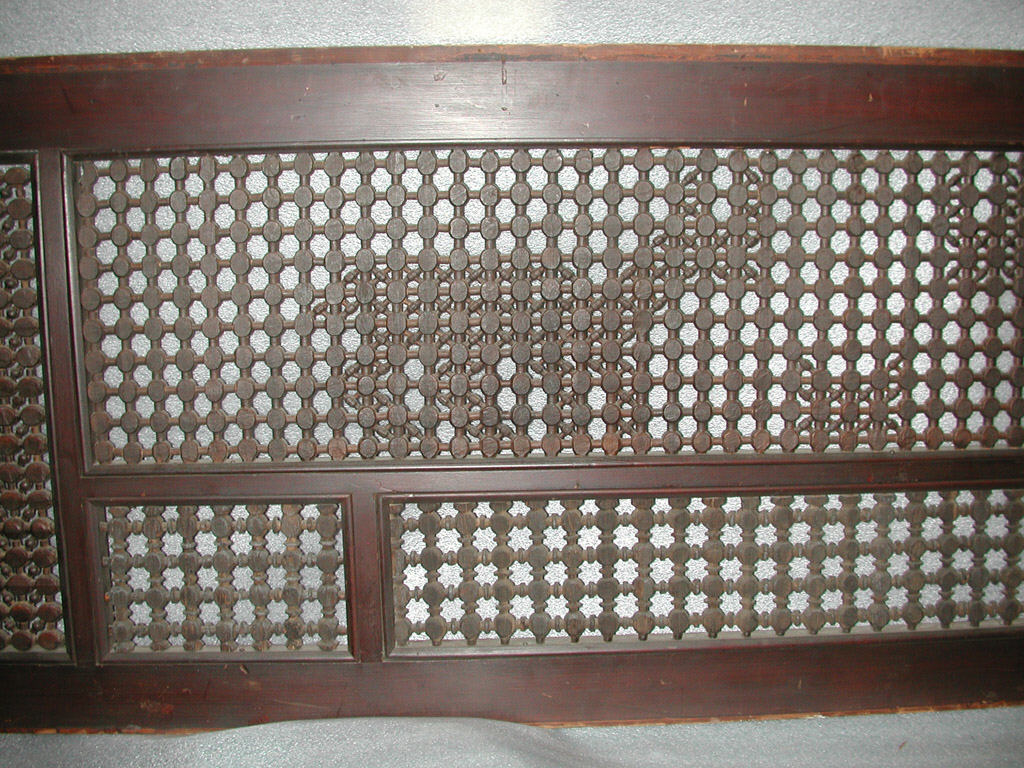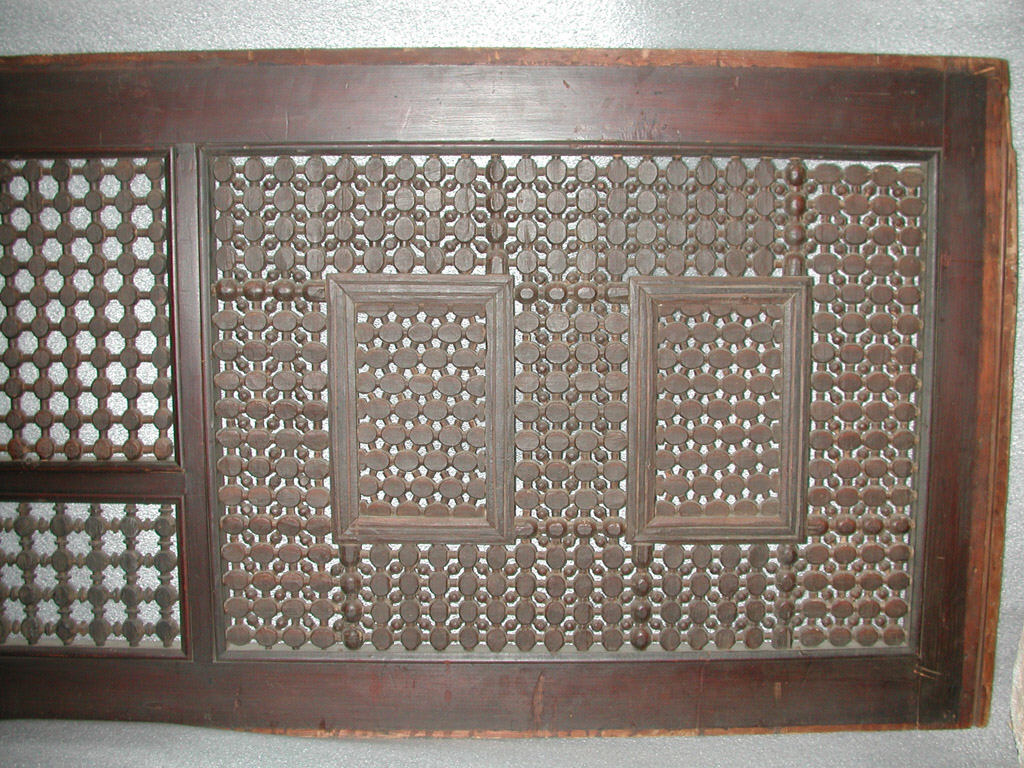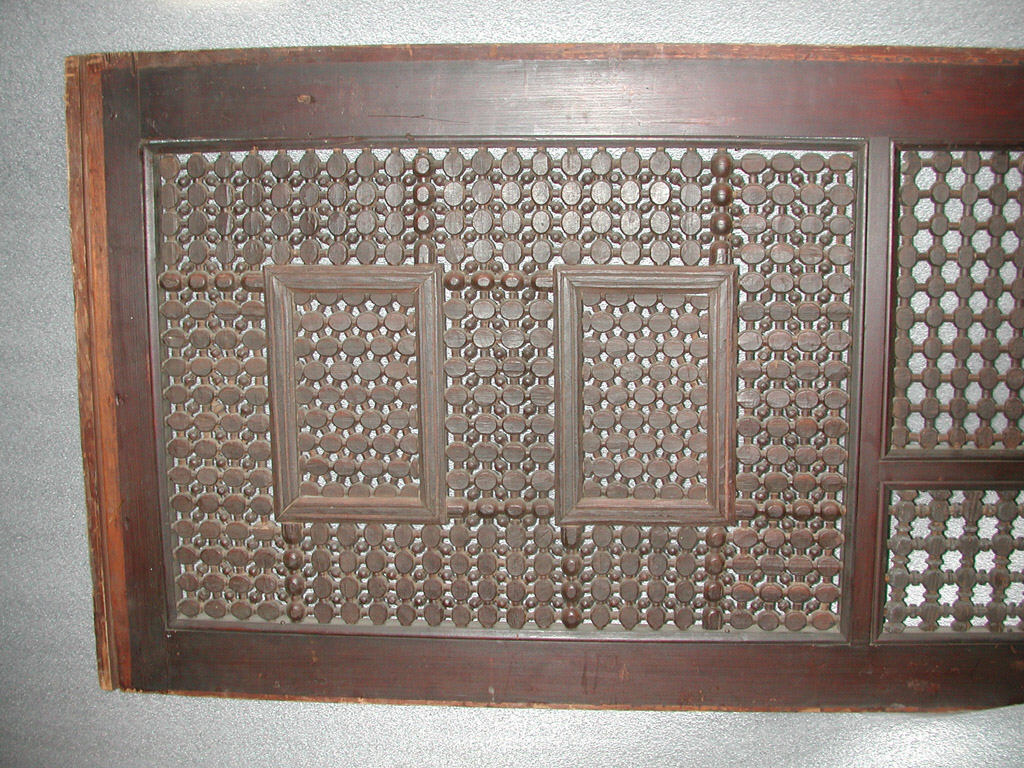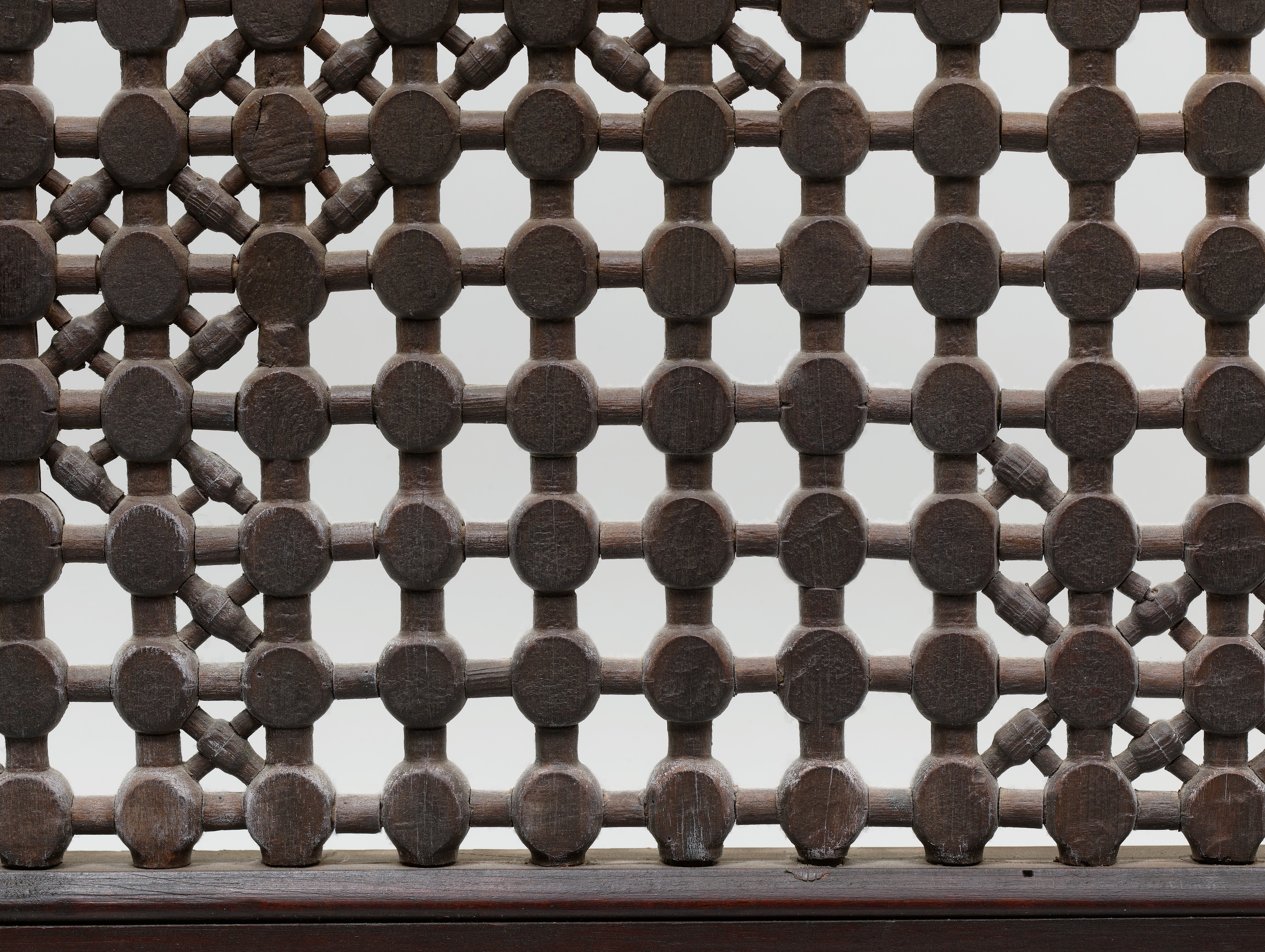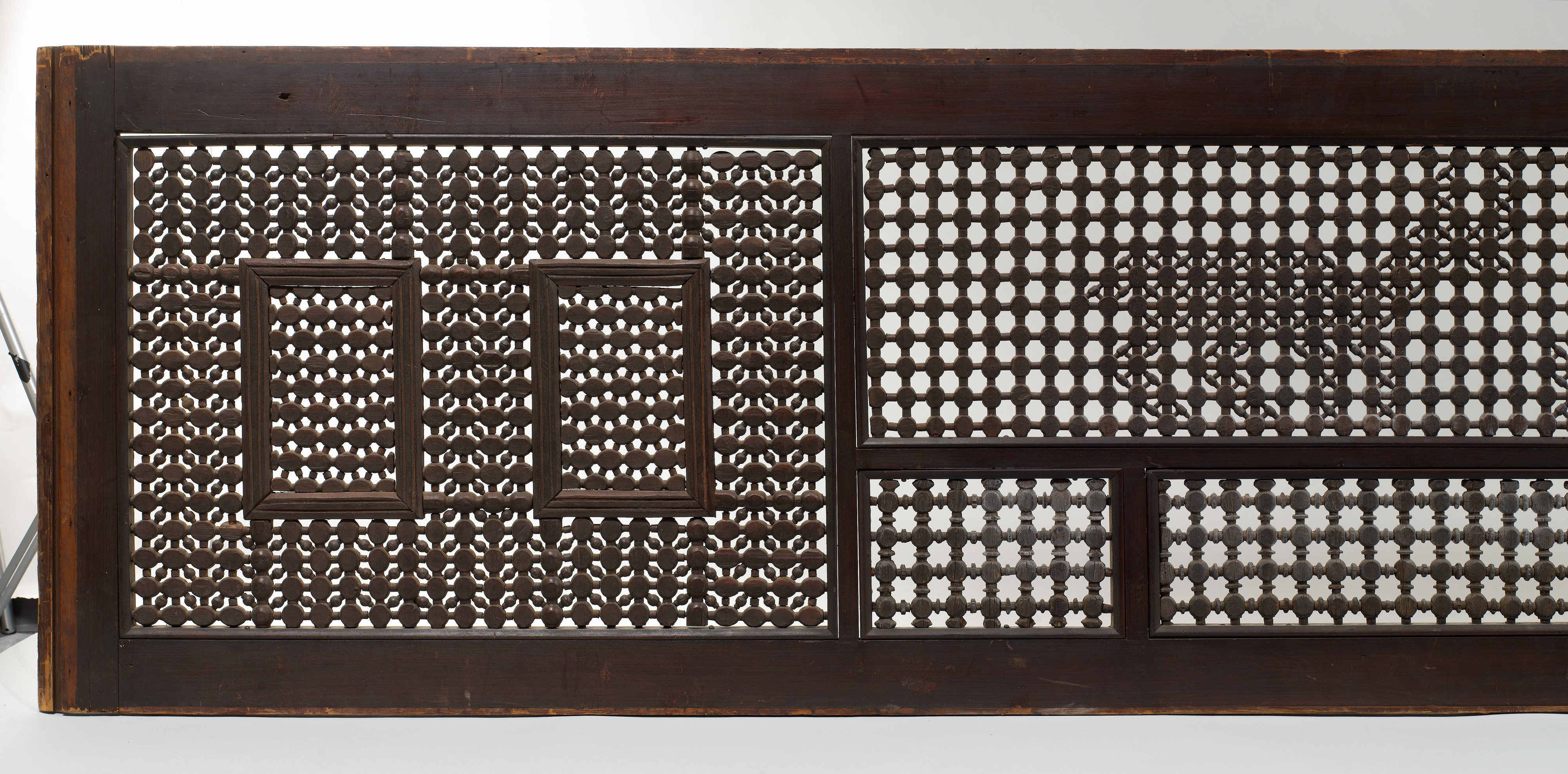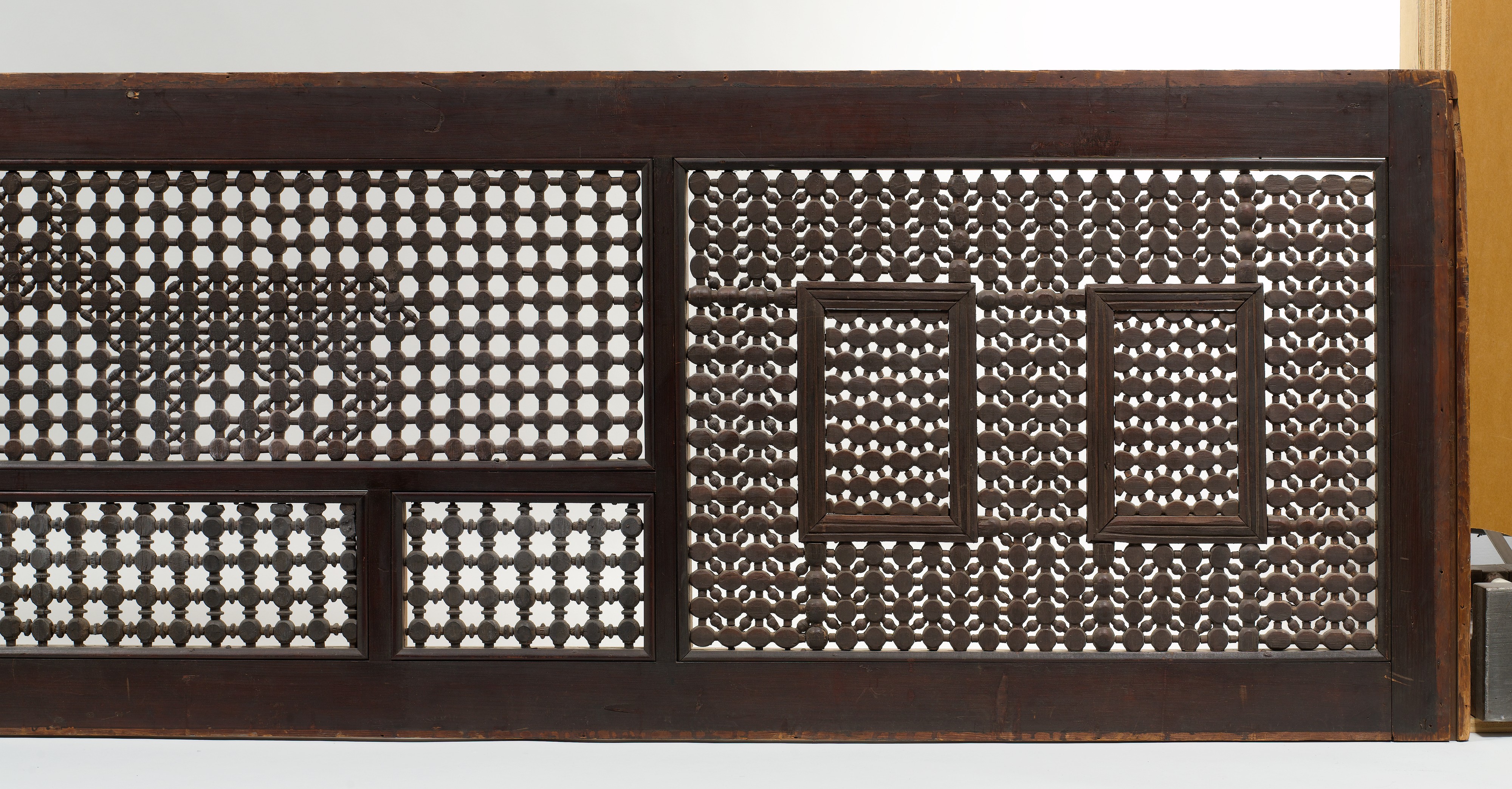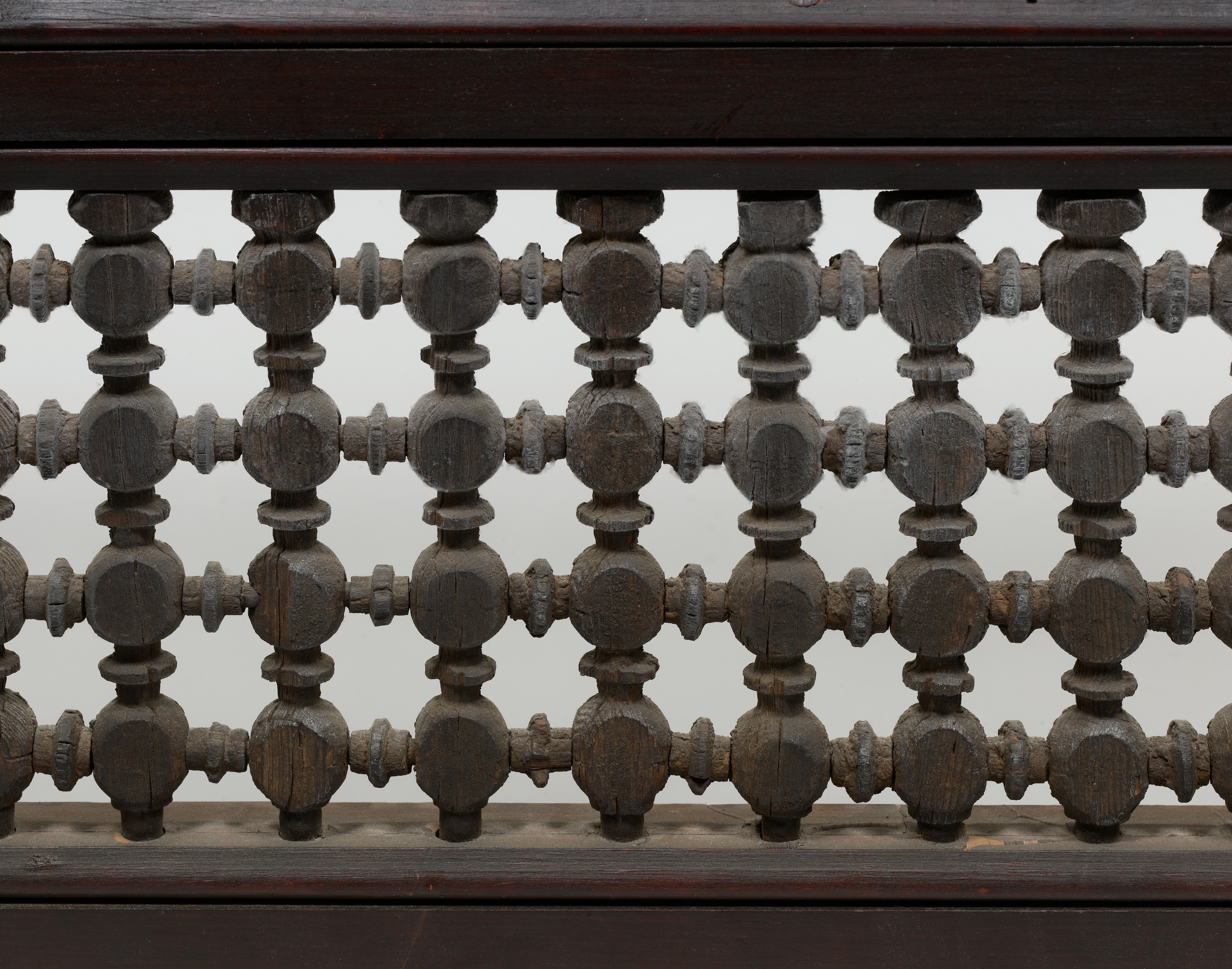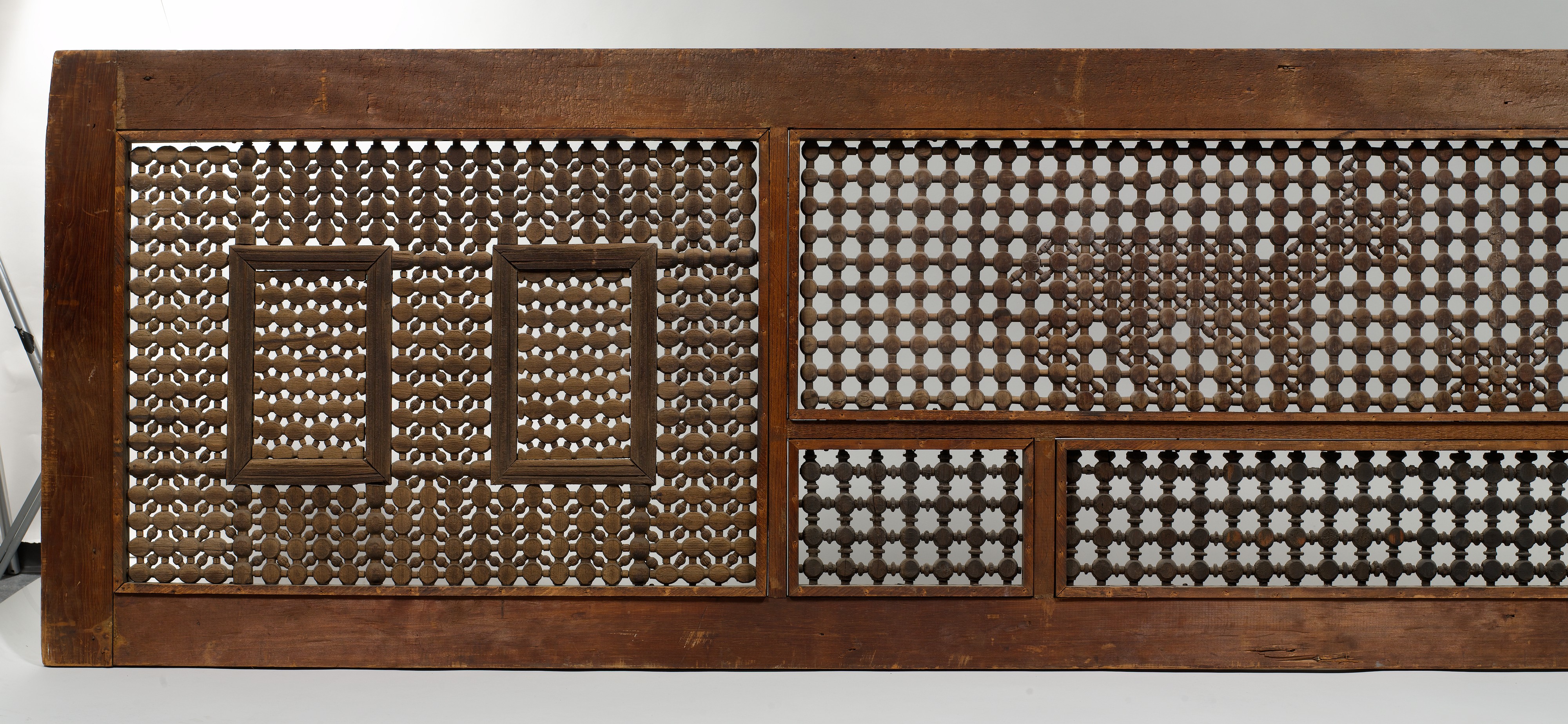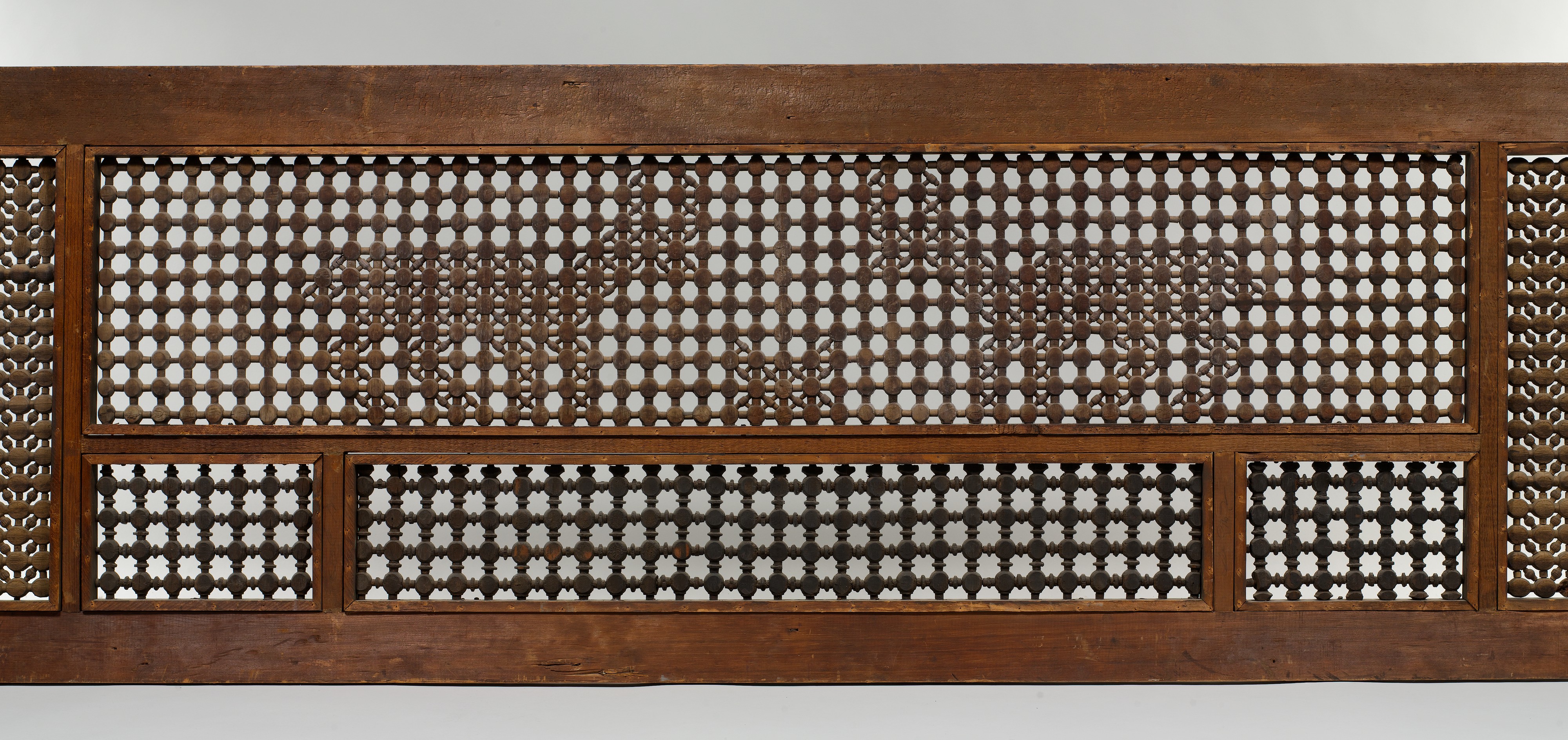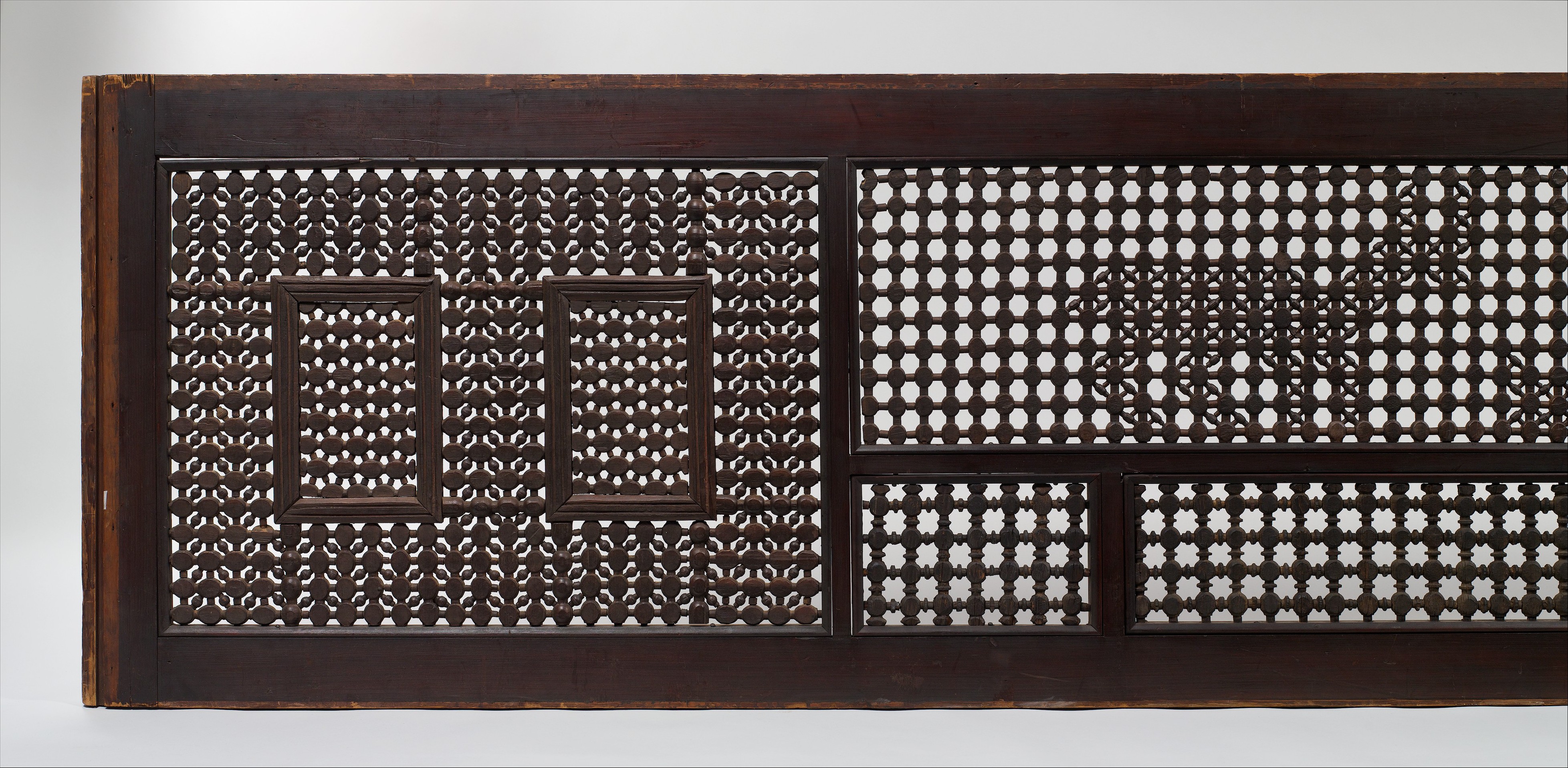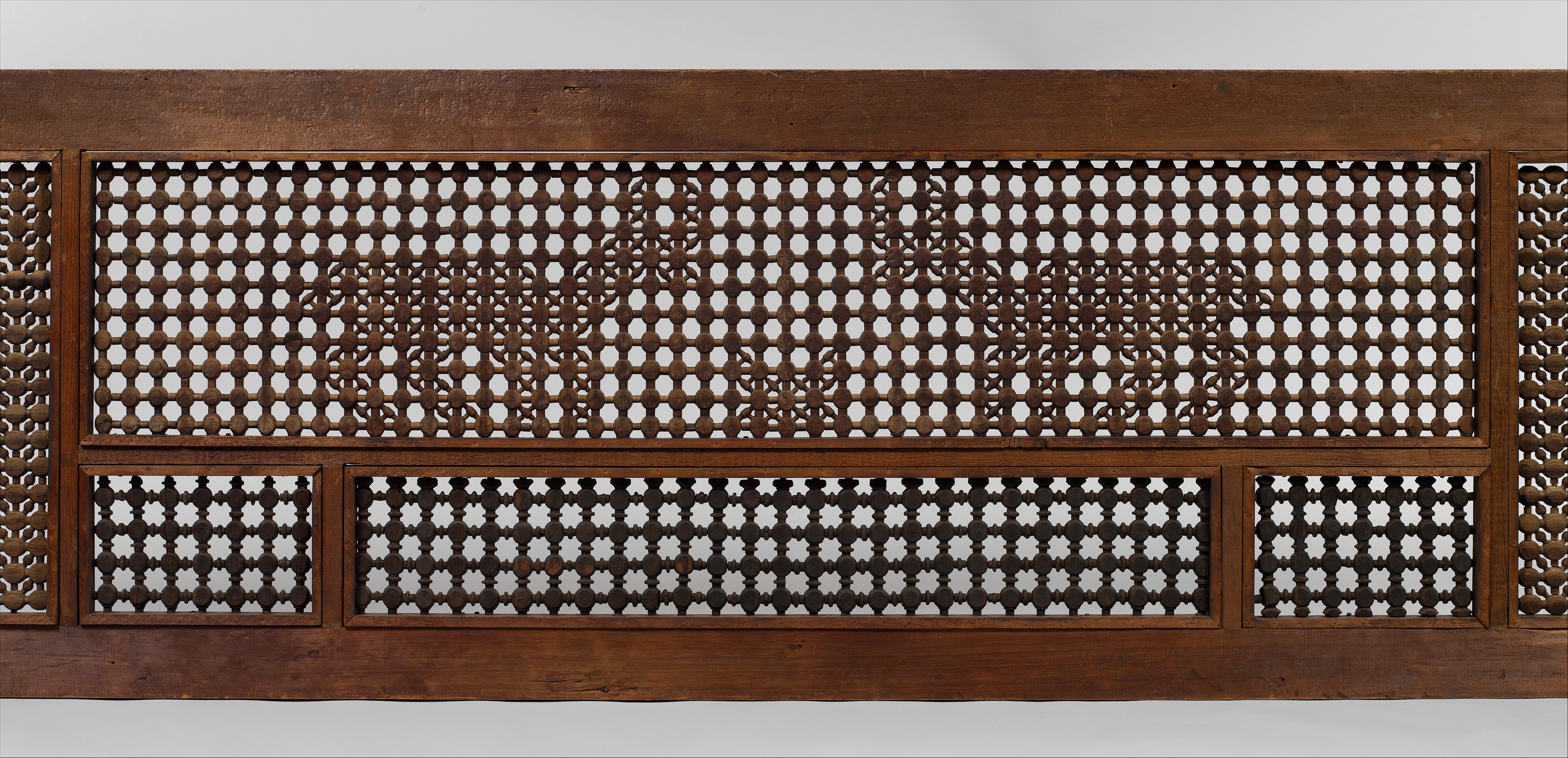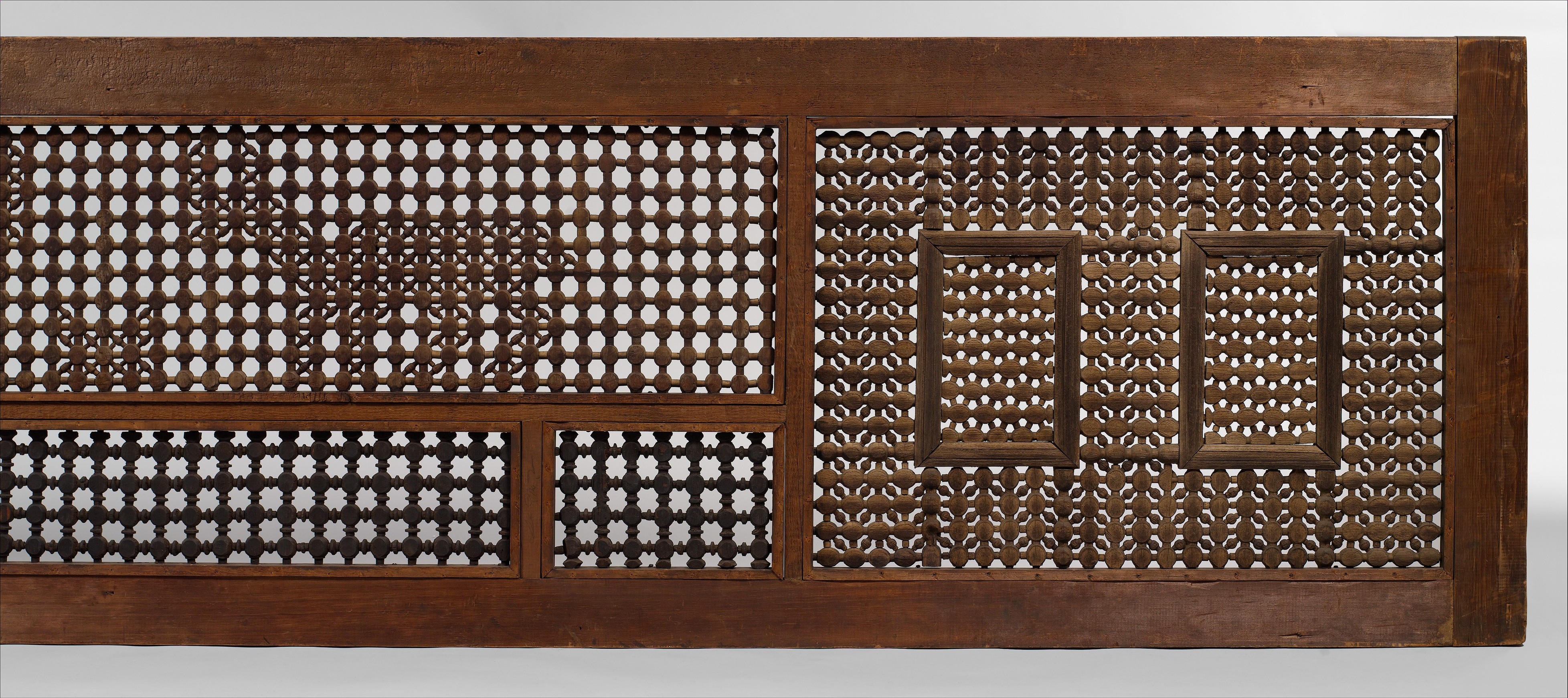Mashrabiyya Screen with Two Gazelles
Turned‑wood screens, called mashrabiyyas, were a characteristic feature of the cityscape of Cairo. Used inside and outside buildings, for balconies, windows, and partition screens, mashrabiyyas were an ideal way to filter the bright sunlight and provide ventilation while maintaining privacy. To make these screens, short pieces of turned wood are inserted into polygonal joints, often at 45-degree angles, creating a lattice. Medieval examples tended to be tightly worked, often with minute inlay. Later mashrabiyyas sometimes introduce a secondary pattern into the lattice pattern, as is the case with the two animals found here.
Due to rights restrictions, this image cannot be enlarged, viewed at full screen, or downloaded.
This artwork is meant to be viewed from right to left. Scroll left to view more.


